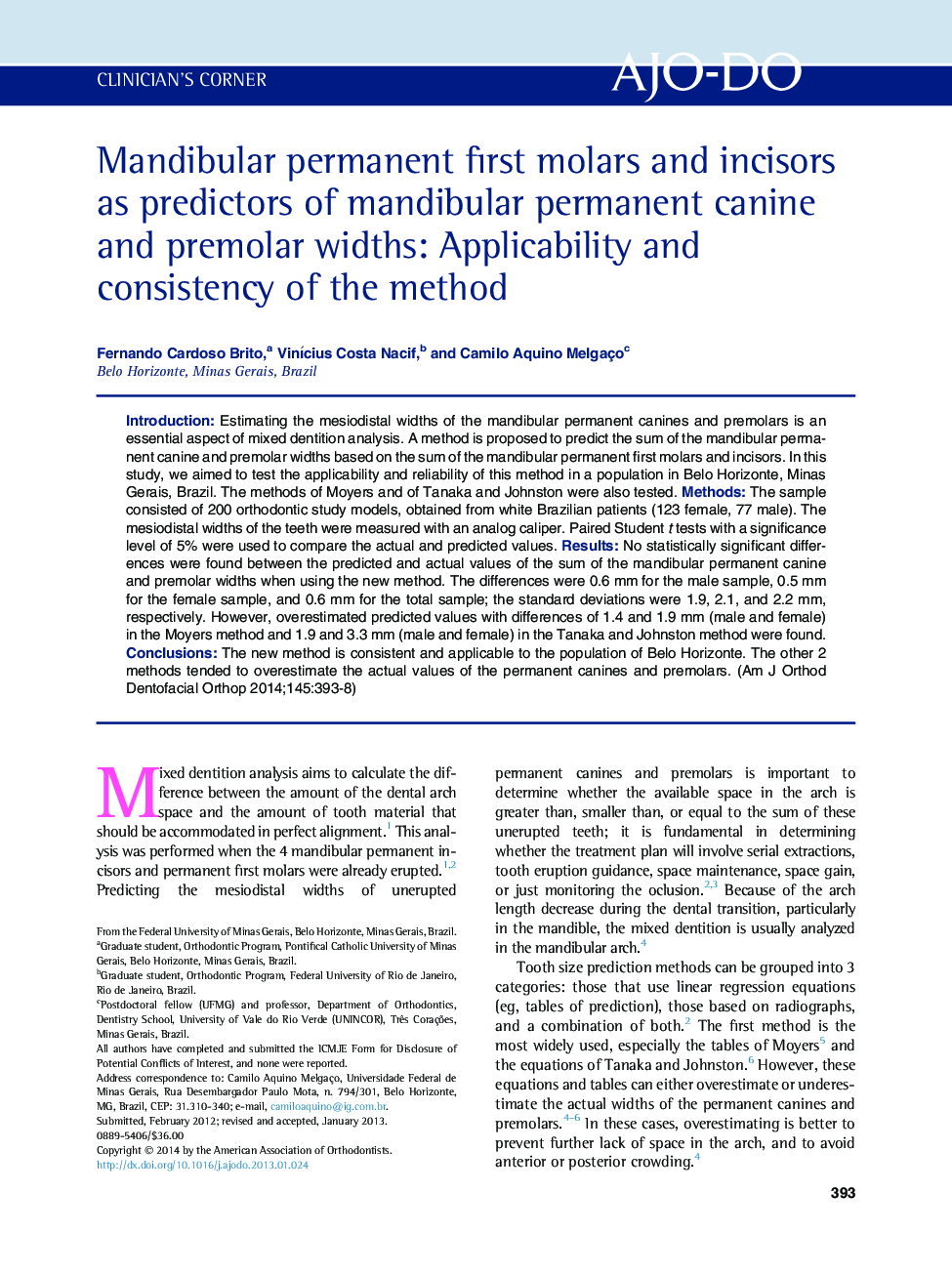| Article ID | Journal | Published Year | Pages | File Type |
|---|---|---|---|---|
| 3116593 | American Journal of Orthodontics and Dentofacial Orthopedics | 2014 | 6 Pages |
IntroductionEstimating the mesiodistal widths of the mandibular permanent canines and premolars is an essential aspect of mixed dentition analysis. A method is proposed to predict the sum of the mandibular permanent canine and premolar widths based on the sum of the mandibular permanent first molars and incisors. In this study, we aimed to test the applicability and reliability of this method in a population in Belo Horizonte, Minas Gerais, Brazil. The methods of Moyers and of Tanaka and Johnston were also tested.MethodsThe sample consisted of 200 orthodontic study models, obtained from white Brazilian patients (123 female, 77 male). The mesiodistal widths of the teeth were measured with an analog caliper. Paired Student t tests with a significance level of 5% were used to compare the actual and predicted values.ResultsNo statistically significant differences were found between the predicted and actual values of the sum of the mandibular permanent canine and premolar widths when using the new method. The differences were 0.6 mm for the male sample, 0.5 mm for the female sample, and 0.6 mm for the total sample; the standard deviations were 1.9, 2.1, and 2.2 mm, respectively. However, overestimated predicted values with differences of 1.4 and 1.9 mm (male and female) in the Moyers method and 1.9 and 3.3 mm (male and female) in the Tanaka and Johnston method were found.ConclusionsThe new method is consistent and applicable to the population of Belo Horizonte. The other 2 methods tended to overestimate the actual values of the permanent canines and premolars.
